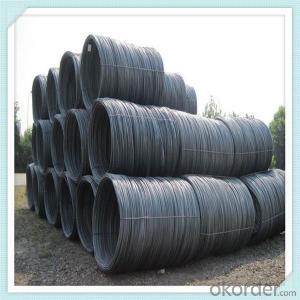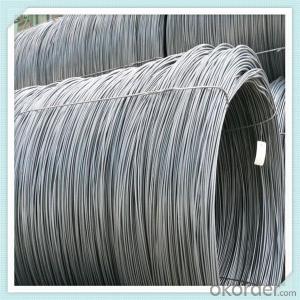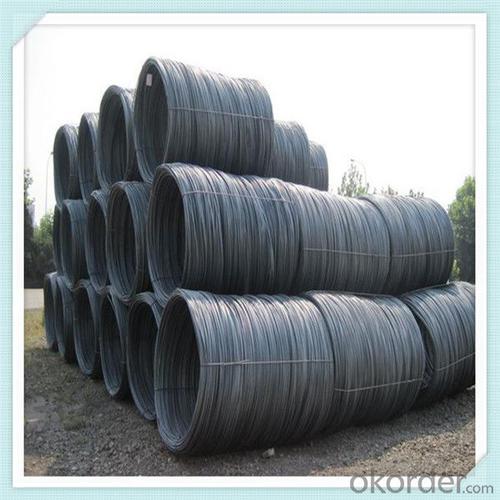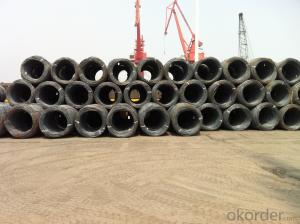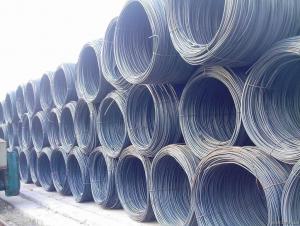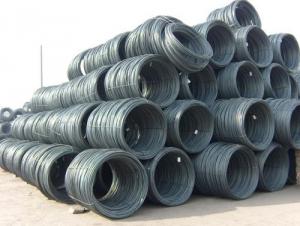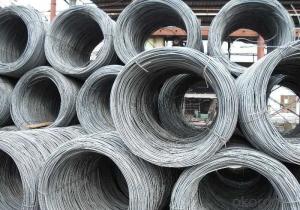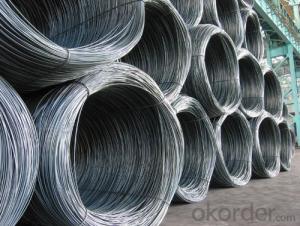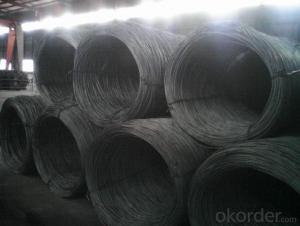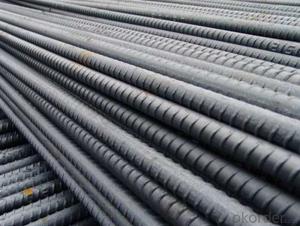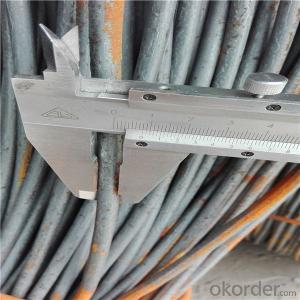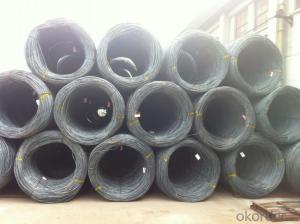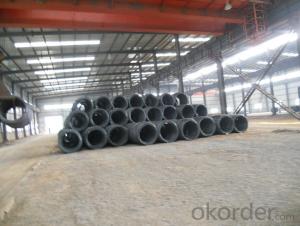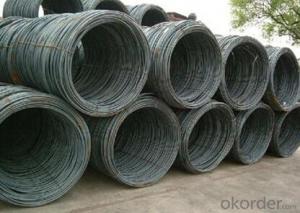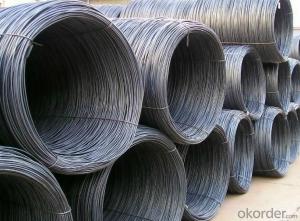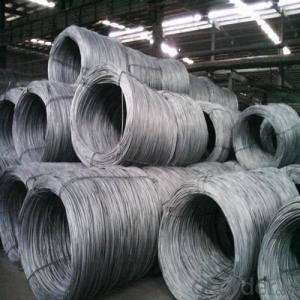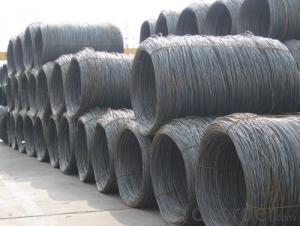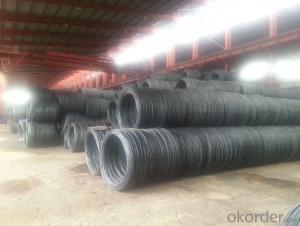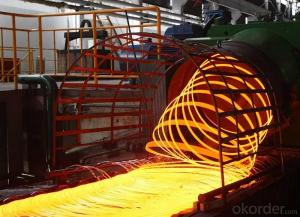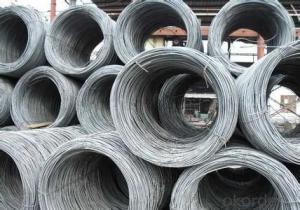Steel sea1008 wire rod coil hot rolled from China
- Loading Port:
- Tianjin
- Payment Terms:
- TT OR LC
- Min Order Qty:
- 100 m.t.
- Supply Capability:
- 142532 m.t./month
OKorder Service Pledge
OKorder Financial Service
You Might Also Like
Specification
Features
1、Pure steel quality, stable chemical contents, small tolerance.
2、Constant Quality, good drawing performance.
3、High dimension accuracy degree, accuracy degree of Level C up to 80%, smooth surface, less scale,
easy to be pickled.
4、Automatic bundling with 4 lines by Machine in tidy and good looks
5、Big high quality percentage, small coil percentage, and heavy coil weight for Hard Coil.
6、High sorbitizing percentage.
Used to make steel nail, mechanical spare parts. The high carbon steel wire coil is used to make steel
wire rope for different usage, spring steel wire, steel core Al strands, galvanized steel wire, galvanized steel
strands, prestressing steel wire
Product Description :
Standard | AISI, ASTM, BS, DIN, GB, JIS |
Material/steel grade | Q195-Q235,SAE1006B,SAE1006CR, SAE1008B, SAE1008CR, SAE1010B, SAE1018B, or according to customers requirements |
Wire Gauge | 5.5-12mm |
Coil weight | 1.8-2.1mts |
MOQ | 25MT |
Delivery Time | 15-30 days after receipt of L/C or deposit by T/T |
Packing | In coil and load in container, if large quantity, by bulk vessel; Can be packed as customers' special requirements |
Payment terms | 1).100% irrevocable L/C at sight. 2).30% T/T prepaid and the balance against the copy of B/L. 3).30% T/T prepaid and the balance against L/C |
Application | widely used in machinery parts, manufacturing industry, electronics industry, metal tools and others |

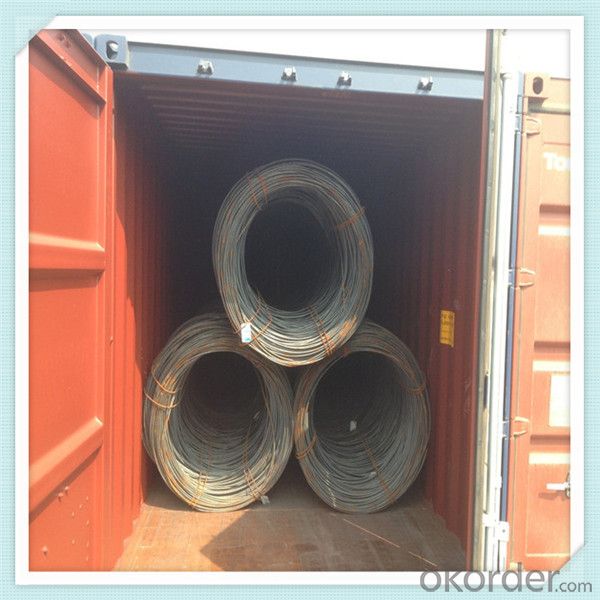
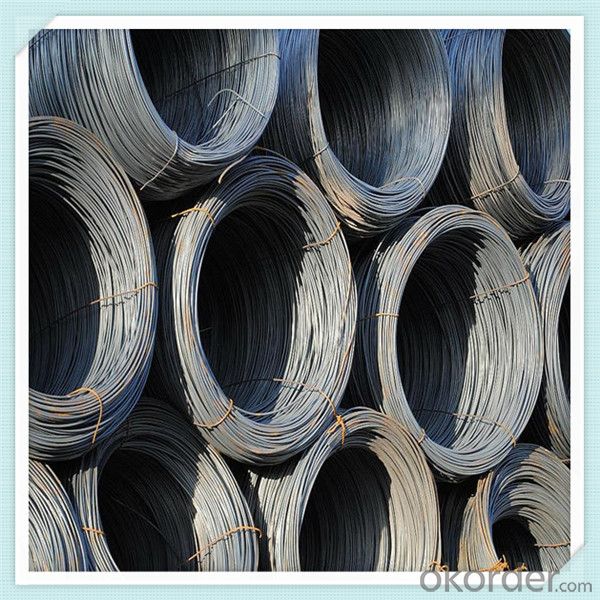
Application :
It generally used in braiding the hose for bathing product and machinery. With it
good flexibility, resistant to high temperature and resistant to corrosion, it
used widely in many industries.
Packing :
Hot-rolled wire rod is held in a unit with at least four steel straps in the
transverse direction and transported and stored without further packaging.
Before
the steel strapping is applied, the wire rod must be sufficiently compressed.
The strapping is fixed in the transverse direction with a single circumferential
strap so that the strapping does not slip and cause the coil to come apart.
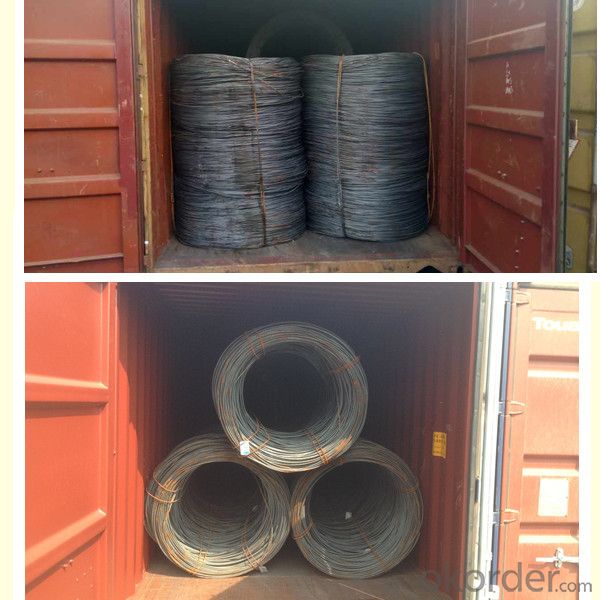
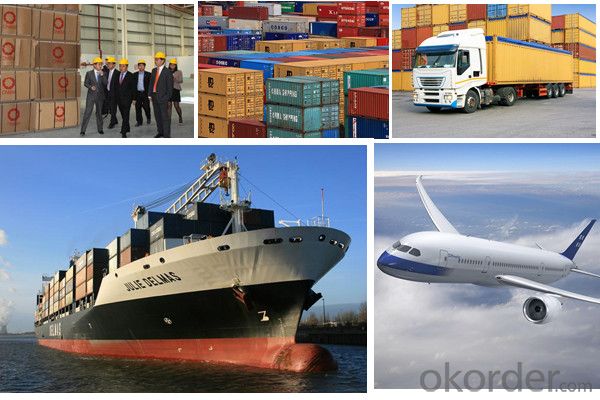
Our service:
(1) We cooperate with famous factories with advanced equipment and well trained workers.
(2) We can provide factory price with trading company service.
(3) We continuously work on the improvement of our processes, guaranteeing
consistently high standards of quality to keep none compensation.
(4) We guarantee 24 hours response and 48 hours solution providing service.
(5) We accept small order quantity before formal cooperation.
(6) We deliver the agreed quality at the agreed time, reacting to changes in
customer wishes in a flexible way.
(7) Due to our volume and selling power, we have excellent freight rates with
shipping lines.
(8) We strive to always be fair and honest in our dealings with customers.
(9) We strive to work together with customers to achieve much more than we can
achieve alone.
(10) Through our passion and commitment we aim to be a market leader in all our
key markets. To maintain our position as market leader we must continue to add
value in all that we do.
FAQ:
1.Q: What's your MOQ(minimum order quantity)?
A: One full container, mixed acceptable .
2. Q: What's your packing methods?
A: Packed in bundle or bulk ..
3. Q: How can I buy CNBM products in my country?
A:Please send us an inquiry or email ,we will reply to you if there is distributor in your country
4. Q: Can we visit your factory?
A: Warmly welcome. Once we have your schedule, we will arrange the
professional sales team to follow up your case.
5. Q: How long does it take to get the product if i place an order?
A:With the process of your requirements,we will pack and deliver in 3
-7 days. If it is by sea shipment,it will take 15-45 days depending on different locations
- Q: How is steel wire rod coated to prevent corrosion?
- There are several ways to prevent corrosion on steel wire rod. Galvanization is a common method, where the wire rod is dipped into molten zinc. This creates a protective layer that acts as a barrier between the steel and the corrosive elements in the environment. Another method involves applying different types of polymer coatings. These coatings can be sprayed, dipped, or electrostatically applied onto the wire rod. By doing so, a barrier is formed to prevent moisture and other corrosive substances from reaching the steel surface. In some cases, wire rods can be coated with a combination of zinc and polymer coatings to provide even greater protection against corrosion. The specific coating method chosen depends on factors such as the intended use of the wire rod and the level of corrosion resistance needed.
- Q: How does the chemical composition of steel wire rod affect its properties?
- The chemical composition of steel wire rod greatly affects its properties. The proportions of various elements in the steel, such as carbon, manganese, and phosphorus, determine its strength, ductility, and corrosion resistance. Higher carbon content results in increased strength but reduced ductility. Manganese improves strength and hardness, while phosphorus enhances machinability. Additionally, the presence of impurities can weaken the steel and make it more prone to corrosion. Therefore, controlling the chemical composition of steel wire rod is crucial to achieving desired properties for specific applications.
- Q: How are steel wire rods used in the manufacturing of springs?
- Steel wire rods are used in the manufacturing of springs by being shaped and coiled to create the desired spring shape and characteristics. The wire rods are typically formed into coils or helical shapes, which are then heat-treated and tempered to enhance their strength and flexibility. The resulting springs can be used in various applications, such as automotive suspensions, mechanical devices, and household appliances.
- Q: How is steel wire rod used in the manufacturing of wire connectors?
- Steel wire rod is used in the manufacturing of wire connectors as the main raw material. It is drawn and shaped into the desired form, providing the strength and durability required for connecting wires securely. The steel wire rod is typically coated or plated to improve its conductivity and corrosion resistance, ensuring reliable electrical connections.
- Q: What are the specifications for steel wire rod in different international standards?
- The specifications for steel wire rod vary in different international standards, but generally include criteria such as the chemical composition, mechanical properties, dimensions, and tolerances. These standards may differ in terms of specific requirements, such as the maximum carbon or sulfur content, tensile strength, or diameter range. Some commonly referenced international standards for steel wire rod include ASTM A510 (United States), EN 10016 (Europe), JIS G 3505 (Japan), and GB/T 4354 (China). It is important to consult the relevant standard for specific details regarding the specifications of steel wire rod.
- Q: What are the main factors affecting the water consumption of steel wire rod production?
- The main factors affecting the water consumption of steel wire rod production include the type of production process used, the scale of production, the efficiency of water recycling and treatment systems, and the availability of water resources in the production area. Other factors may include the technology and equipment used, the level of automation, and the overall management practices employed by the steel wire rod production facility.
- Q: What are the different surface coating materials used for steel wire rod?
- Some of the different surface coating materials used for steel wire rod are zinc, copper, nickel, and epoxy. These coatings provide various benefits such as corrosion resistance, improved appearance, and enhanced durability.
- Q: What are the different surface coatings used for steel wire rod?
- There are several different surface coatings that can be used for steel wire rods. Some common ones include galvanized coatings, which provide corrosion resistance, and copper coatings, which improve conductivity. Additionally, there are coatings like phosphate coatings that enhance adhesion for subsequent coatings, and polymer-based coatings that offer lubricity and reduce friction. The choice of coating depends on the intended application and specific requirements for the steel wire rod.
- Q: What are the main applications of steel wire rod?
- The main applications of steel wire rod include manufacturing various types of wire products such as nails, screws, springs, cables, wires for electrical purposes, wire mesh for construction, reinforcement in concrete structures, and in the production of automotive parts.
- Q: How does the tensile strength of steel wire rod vary with different wire drawing processes?
- The tensile strength of steel wire rod can vary significantly depending on the specific wire drawing process used. Wire drawing is a metalworking process that involves reducing the diameter of a wire by pulling it through a series of dies. Different wire drawing processes, such as cold drawing, hot drawing, and intermediate drawing, can have different effects on the tensile strength of the steel wire rod. During cold drawing, the steel wire rod is pulled through a die at room temperature. This process can increase the tensile strength of the wire rod significantly. Cold drawing aligns the metal's crystalline structure, which results in increased strength and hardness of the wire. The wire is also likely to have a smooth and uniform surface finish due to the cold drawing process. Hot drawing, on the other hand, involves pulling the steel wire rod through a die at elevated temperatures. This process can also increase the tensile strength of the wire rod, but to a lesser extent compared to cold drawing. Hot drawing allows for greater plastic deformation of the steel, resulting in improved ductility and reduced brittleness. The wire produced through hot drawing may have a rougher surface finish due to the higher temperatures involved. Intermediate drawing is a combination of both cold and hot drawing processes. In this process, the steel wire rod is initially subjected to hot drawing and then cold drawing. This combination allows for greater control over the mechanical properties of the wire, including tensile strength. Intermediate drawing can result in a wire with improved strength and ductility, as the hot drawing process improves plastic deformation and the cold drawing process aligns the crystalline structure. In summary, the tensile strength of steel wire rod can vary with different wire drawing processes. Cold drawing generally results in the highest increase in tensile strength due to the alignment of the crystalline structure. Hot drawing and intermediate drawing processes also increase strength but to a lesser extent, while providing other benefits such as improved ductility and reduced brittleness. The specific wire drawing process chosen depends on the desired mechanical properties and surface finish of the wire.
Send your message to us
Steel sea1008 wire rod coil hot rolled from China
- Loading Port:
- Tianjin
- Payment Terms:
- TT OR LC
- Min Order Qty:
- 100 m.t.
- Supply Capability:
- 142532 m.t./month
OKorder Service Pledge
OKorder Financial Service
Similar products
Hot products
Hot Searches
Related keywords
